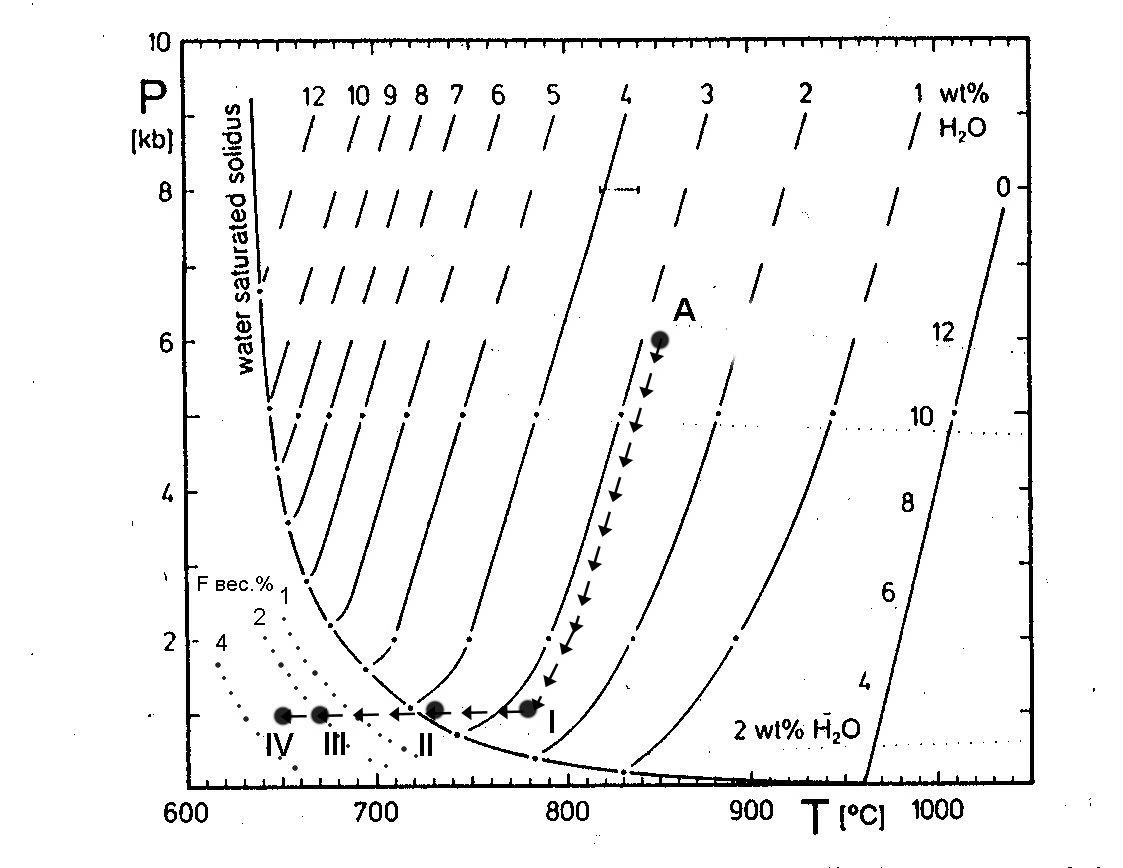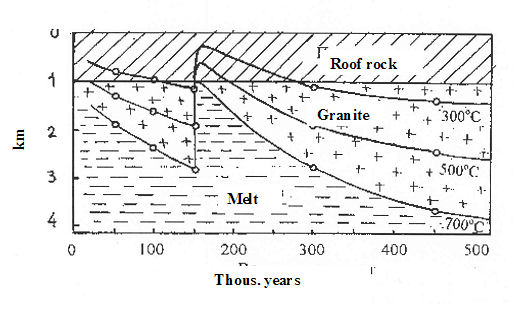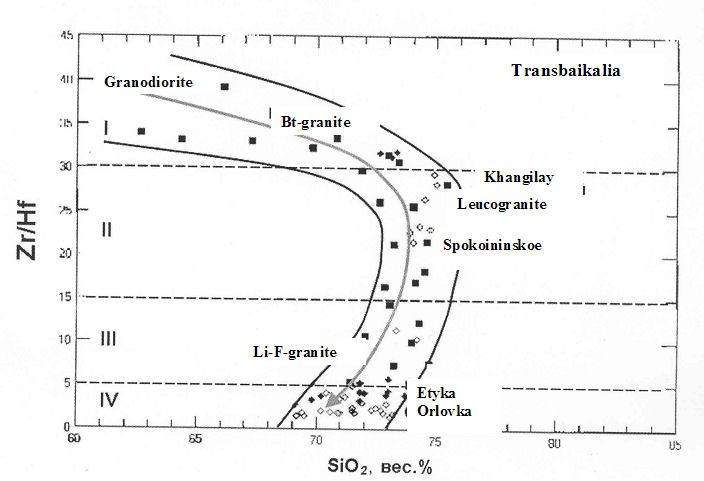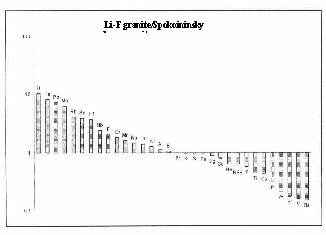|
THE CONDITIONS OF GENERATION, CRYSTALLIZATION AND FRACTIONATION OF RARE-METAL GRANITES
Institute of Experimental Mineralogy RAS, Chernogolovka, Moscow region, Russia, zaraisky@iem.ac.ru
The considered granites belong to activization alkaline-earth granite-leucogranite suite. Their hypabissal intrusives are checked deep-seated faults which crossing thickness of earlier consolidated regions. The interconnecting reason of W, Sn, Be, Mo, Ta, Nb, Li rare metal deposits solely with this granite type belongs to the category of undecided questions. As a geological object are chose well studied greisen W-Mo deposits and granite intrusives of Akchatau complex in Central Kazakhstan (P1) and albitite type deposits associated with Ta, Nb, Li mineralization and Sn, W, Be greisen deposits of Kukulbey granite complex (J3) in East Transbaikalia (Zarayskiy, 2004). The absence in granite sequences of both complexes more basic derivates, than biotite granite (in rare events granodiorite), isotopic data and petrochemical particularities of ore-bearing granite are indicative of the granite genesis by melting from granite-gneiss substratum of upper continental crust. Most likely that melting of crust take place in lower part of upper crust near Conrad Discontinuity located in both regions at the depth 22-25 km. Typical scheme of the granitic melt origin and its ascent on hypabissal top-level is shown on example of the Akchatau area, for which there are gravimetric data, allowing draw roof and bottom of Akchatau pluton (fig. 1). On experimental diagram (Johannes, Holtz, 1996) with provision for available P-T data is intended probable way to evolutions P-T parameter from generation melt in bottom of the upper crust (the point “A”) up to consequent intrusion four phases of Akchatau massif (fig. 2). It is expected that main body pluton built paternal biotite granite (phases I), but more late phases II and III, having close composition, corresponding to leucogranite are its intracamber differentiated products. Conditionally chosen on Akchatau phase IV is presented one Li-F granite dike with topaz and protholitionite. The Position of the phases III and IV below granite solidus is explained by accumulation of the fluorine, shifting solidus in more low-temperature area. As of numerical modeling (Zharikov et al., 1988) duration to full crystallization of the Akchatau pluton (~30х15х5 km) forms beside 600 thous. years. Length to crystallizations of the phase II, volume 2х2х2 km and T=700oC at scenario of its introduction in cupola part of massif through 150 thous. years after beginning crystallizations paternal intrusive (phase I) is 170 thous. years (fig. 3). Commercial W-Mo mineralization Akchatau is related to leucogranite of the phase II.
In East Transbaykalia also develop W, Sn, Be, Mo deposits greisen type connected with leucogranite. But there fractionation lasted further up to lithium-fluoric granite and in accordance with them tantalum deposits. Is fixed unceasing trend fractionation of postorogenic granites abreast: granodiorite → biotite granite → leucogranite → lithium-fluoric granite as on rock-forming, so and on volatile and ore component (fig.4). In this row occurs consecutively growing accumulation lithofile rare-metal Li, Be, Rb, Cs, Sn, W, Mo, Bi, Ta, Nb and fluorine, providing formation rare-metal deposits (Fig. 5). Solving importance for appearance rare-metal granites has "short fractionation trend " - an absence predecessor of more mafic composition such as diorite and gabbro, in dark-coloured and accessory mineral which dissipate the rare metals. Probably, condition of the melting the upper continental crust without melting the lower crast can be reached in it is enough rare events deep submersion of more low-melting upper crust in area of the high temperature. Together with that heat flow must not be too great to were not reached condition of the melting more mafic and high-melting lower crust.
Fig. 5
.
Enrichment by rare-elements of Orlovka and Etyka Ta-bearing granites
(phase III) versus leucogranite of Spocoininsky W deposit (phase
II).
References Zharikov V.A., Epelbaum M.B., Zaraisky G.P., Simakin A.G., Balashov V.N. Numerical modeling of heat- and mass-transfer at greisen deposit Akchcatau // Outlines of physico-chemical petrology. Moscow: Nauka, 1988. V.15. P.38-69 (in Russian). Zaraisky G.P. Formation conditions of rare-metal deposits related to granite magmatism // Smirnovskii Sbornik-2004. Moscow: Foundation of ac. V.I. Smirnov. 2004 P.105-192 (in Russian). Johannes W., Holtz F. Petrogenesis and Experimental Petrology of Granitic Rocks. Berlin: Springer-Verlag., 1996. 335p.
|




